The method of growing plants, referred to as hydroponic, appeared in Russia relatively recently, but almost immediately deserved recognition. Hydroponic plants are characterized by a healthy and powerful appearance, well fruit and are not subject to pest attacks, so they require less care and costs. In this article, we will analyze in detail the question of the method of hydroponics and tell how to equip a mini-garden at home.
What is hydroponica
Many amateur gardeners are interested in homemade hydroponics for one simple reason - it is economical. This method allows you to grow practically any plants without special financial and physical costs.
Pots for growing
Before proceeding to the essence of this method, it is worth dealing with inventory. For growing hydroponic crops, you will need special pots - aqua. From the name it is already possible to understand that it will be about the presence of water. Aquapot is an unusual double pot - one vessel is filled with substrate and inserted into the other - more. The second container is filled with a liquid nutrient solution, which gradually penetrates the substrate and gives roots the necessary substances for the growth of colors and fruits. Thus, the design replaces even the most "juicy" land mixture, because, unlike the Earth, where the nutrients are completely pulled out with the plants completely, a solution can be pouring into pots as it descends.
Pot for hydroponics (photo):
Aquapots can be bought in the store or make their own hands from a conventional plastic pot and any other capacity than more size so that the pot into it is easily placed.
But there are certain requirements that any pot for hydroponics must be configured:
- Roots plants must be completely covered with a substrate.
- The external pot must be fully waterproof and not enter into a chemical reaction with a nutrient solution (choose ceramic vessels from pottery clay).
- If the external pot is made of plastic, make sure that it is a light-tight (dark color). Otherwise, the solution "blooms", and on the roots of plants will appear algae, which will negatively affect their growth.
If you make a pot for hydroponics with your own hands, you can do with infirred materials. So, a tetrapak of juice or milk is perfect as an external vessel. Put it on the side, shift the hole under the gear side, put the vessel with the substrate and pour the nutrient solution into a tetrapak so that its level is 1.5-2 cm. To do this, you can make a mark on the domestic pot.
Another option for the manufacture of the simplest pot for hydroponics from a plastic bottle (the outer part can be painted with dark aerosol paint):
An interesting fact: it is known that every year it becomes more and more difficult to get a large harvest of healthy vegetables and fruits without GMOs, chemicals, etc. In the world of modern technologies, homemade hydroponic installations have already begun to appear, allowing their family healthy food. By the way, such an installation may well serve as not only a useful source of homely greenery, but also become a modern interior decoration.
Substrate for hydroponics
As for the substrate, here you also save here. Unlike the Earth, it is not necessary to change it every year, and the initial cost of it is much cheaper than the nutritious earth mixtures.
In the role of a substrate for growing by hydroponics using ordinary clay, coconut fiber, mineral wool, perlite, nylon, foam rubber or any other chemically neutral fiber.
The nutrient solution also saves time, money and strength. Let's say if you grow a begonia in a pot, then the liter of the solution is enough for a whole year. Buying a concentrate, designed for the final result of 50 liters, you get a fertilizer, which is enough for 50 years for one plant or for a whole year for homemade in 50 plants!
To always keep the level of the solution in pots under the control, there is one trick - to the solution omit the tube with a float and marks "Maximum", "optimal" and "minimum". It is important that not all the roots are in water, otherwise there will be no access to oxygen, and the plant will die. It is also necessary to ensure that the roots do not flip the bottom of the tube with the float, otherwise it will show incorrect data.
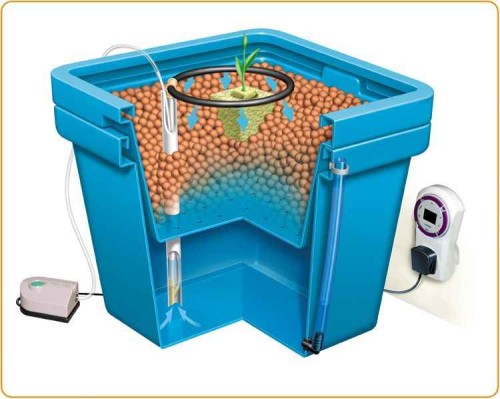
Solution for hydroponics
How to grow hydroponics at home is more less clear, but what kind of nutritional solution is needed for this? You can buy it in any specialized gardener store. It is recommended to strictly adhere to the recommendations for the dilution of concentrate water (indicated on the package).
If possible, try to constantly maintain the level of the solution in the pot on the same level, pouring the room temperature if necessary.
The solution needs to be completely replaced by about once every 3 months. More accurate time indicated in the instructions from the manufacturer.
Consider that various concentrations of the solution are needed for different plants. So, orchids, epiphytes, bromellene and insectivoid exotic plants require 2-4 times less concentration than, say, balcony tomatoes. At the same time, fast-growing species, such as bananas, should consume much more nutrients, so the concentration should be increased by about 1.5 times. Annual vegetable crops need a concentration slightly above the average (about 1.25 times).
In the cold season, the solution must be diluted with water more accurately, reducing the concentration by 2-3 times from medium or to a minimum.
Solution for hydroponics with their own hands:
- Mix the complex fertilizer "Unifloor" ("Growth" or "Bud", depending on which part of the plant it is necessary to make an emphasis). Squeeze with a syringe with 1.65 ml of fertilizer on 1 l of indulged water temperature.
- Add 2 ml of the calcium nitrate solution of 25%. To make such a solution, it is necessary to dilute 250 grams of the four-wheel calcium (do not confuse with potassium) nitrate in the water liter. Such a concentration is suitable for soft distilled water. For rigid water, you need to find out the calcium concentration and calculate the dosage of the SELITRA, based on the results (you can find out in the waterochannel or in SanEpidemstation).
- Important: Fertilizer and Selitra can not be mixed in pure form (not divorced water). For mixing, use different syringes or rinse one syringe thoroughly with ordinary water.
If you are not sure about your abilities, it is better not to risk and buy a finished nutritious solution in the store.
Advantages of hydroponics
Hydroponics at home has a number of obvious advantages, some of which we have already managed to mention above. This method of growing plants is becoming increasingly popular for the year not only in connection with the economic and environmental situation in the world, but also as the most faithful way to get clean, delicious, inexpensive products and master useful skills.
All advantages of hydroponics can be reduced to the following points:
- This method always gives a 100% result, while the crop on the garden may abide due to bad weather conditions, parasites or soil depletion.
- The hydroponic can be engaged in absolutely any person at home - it does not occupy a lot of space, does not require specialized equipment, complex skills and skills.
- Savings - just once to buy a substrate and not change it every year, like the Earth. The nutrient solution is enough for a long time, chemical protection against insects and pests is not required.
- Plants ripen and flourish much faster than if there were outdoors in the soil.
- The plant itself takes exactly so much useful trace elements from the solution, how much he needs to grow strong and healthy.
- You do not need often watering plants - water leaves very slowly, so you can safely leave for a few days, without fear that the plants are covered. There are plants that are designed to top up the water just a month.
- Rice is reduced to overdo the fertilizer and harvest the plant. The nutrient solution does not have side effects in contrast to harmful chemicals that stimulate plant growth.
- You can forget about land pests and typical diseases of gardens and garden plants.
- In the process of transplantation, you do not need to free the roots of the plant from the old earth, risking them to traverse them - it is enough to simply choose a pot of more and shove the substrate.
Transplant plants
The technology of hydroponics is very simple and allows you to grow at home almost any plants that breed with cuttings and seeds. A transplantation from the ground to the substrate is better to exercise when the plant has already less rising, and its roots are cooked and stunned (so that they can be easily cleaned from the ground). If an adult plant has a gentle root system, the transplant is better not to be carried out at all.
To transplant a plant from the ground to the substrate, follow these steps:
- Gently remove the plant from the pot, knocking on the walls and the bottom.
- In the basin, type the water temperature and soak an earthen car for a couple of hours.
- Carefully separate the land from the roots and rinse the plant under the water jet temperature.
- Scatter the roots and pour them off their substrate by fixing the plant in a vertical position. The roots should not touch the water layer - the solution will rise by the substrate upward, and the roots will germinate on the desired depth.
- Pour the substrate with water room temperature.
- Pour the desired water level into the vessel and leave the plant for 5-7 days.
- Only after about a week, water can be replaced with a nutrient solution.
Do not pour the solution at once during the transplantation - the plant is also experiencing stress, and so you only aggravate the situation and destroy it.
Video about hydroponics clearly demonstrates the advantages of this method of growing flowers, vegetables, berries and greens. You get an excellent harvest in a short time without spending those efforts and time that usually go to care for harvesting in the garden.
The video demonstrated the professional cultivation of garden crops, but the same can be arranged on the windowsill, on the balcony or in any other place in a more modest scale.

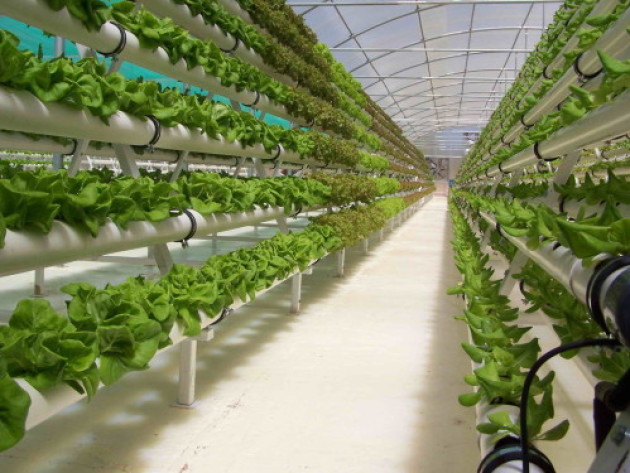
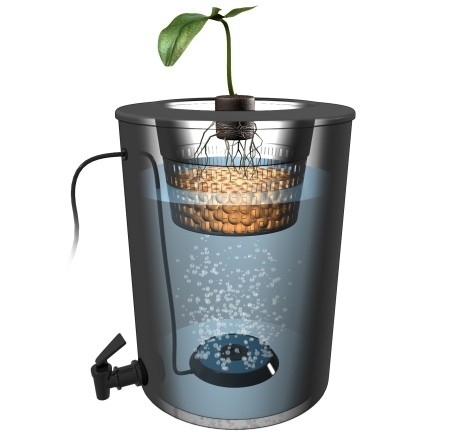

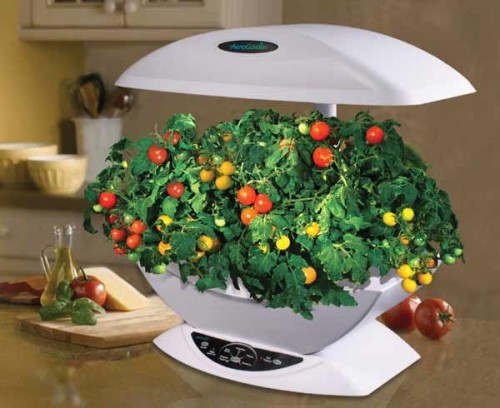
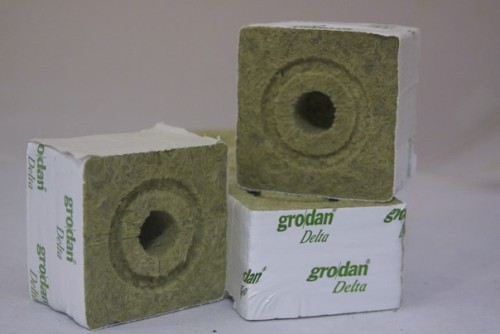
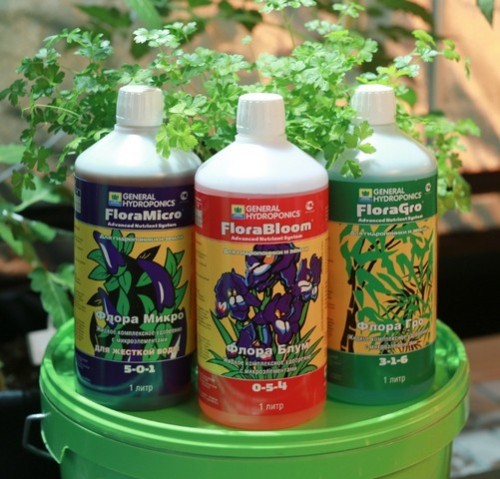













 Start a discussion ...
Start a discussion ...